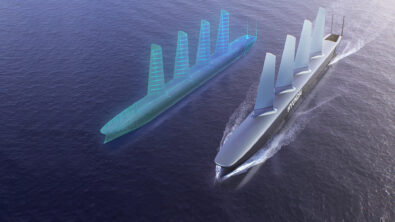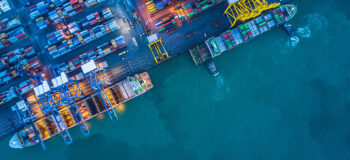Environmental regulations rocking the maritime industry
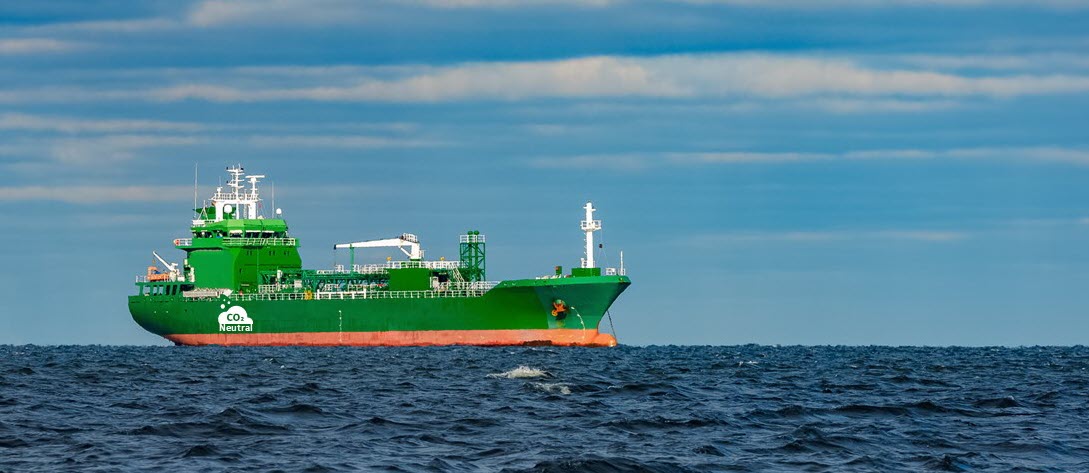
The last meeting of the International Maritime Organization (IMO) and its Marine Environment Protection Committee (MEPC 80) in July 2023 will change maritime history. During this meeting, the member states adopted the IMO Strategy on Reduction of GHG (greenhouse gas) Emissions from Ships. They accelerated the timeline for achieving zero-emission targets, moving from 2100 to 2050. The environmental regulations by IMO urge the maritime industry to become carbon neutral by 2050.
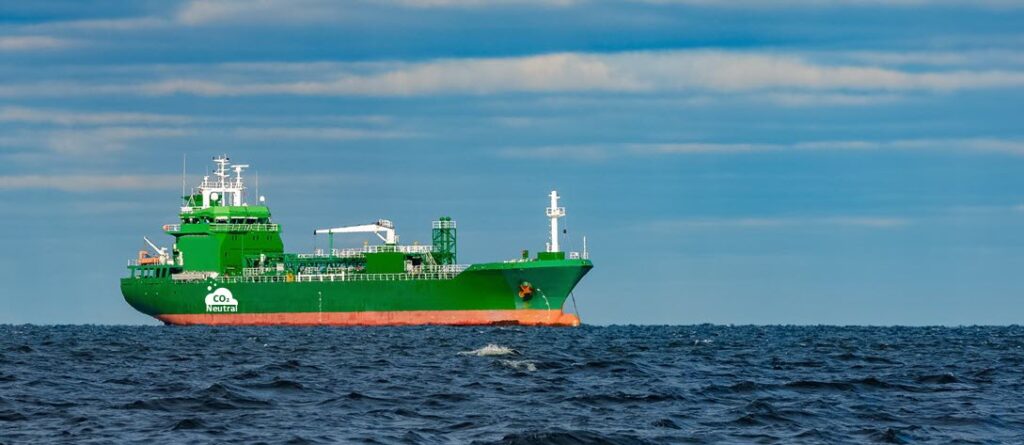
Of course, this is good news for all of us and our planet! Especially if we know that the maritime industry contributes around 3% of global pollution and the volume of seaborne transport continues to grow steadily. But. Let’s first assess if the industry is ready to reach this ambitious target. Some of these mandates will disrupt established ship design approaches, necessitating a paradigm shift in ship life-cycle planning from design to operation.
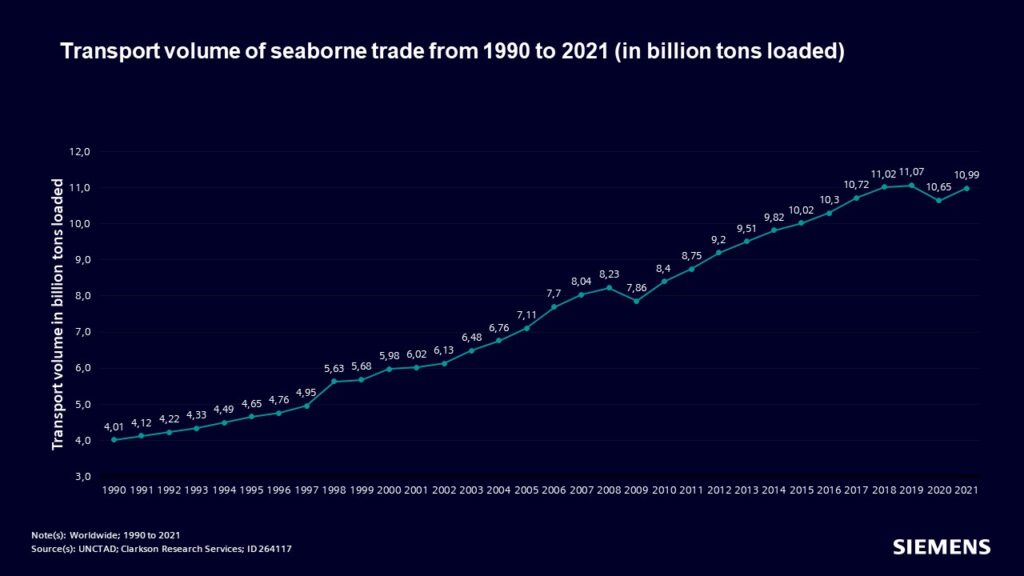
The next step after EEXI and EEDI environmental regulations
The IMO is urging immediate measures to combat the pressing issue of climate change. The journey towards transforming the marine industry into a green and sustainable sector cannot be accomplished overnight. Instead, IMO has been introducing new regulations that are gradually growing more stringent over a decade.
After the introduction of the EEDI (Energy Efficiency Design Index) environmental regulations in 2014, the next significant milestone on this journey is the EEXI (Energy Efficiency Existing Ship Index), which came into effect in 2023. These regulations pertain to the reduction of carbon emissions for all vessels, both existing and those yet to be built.
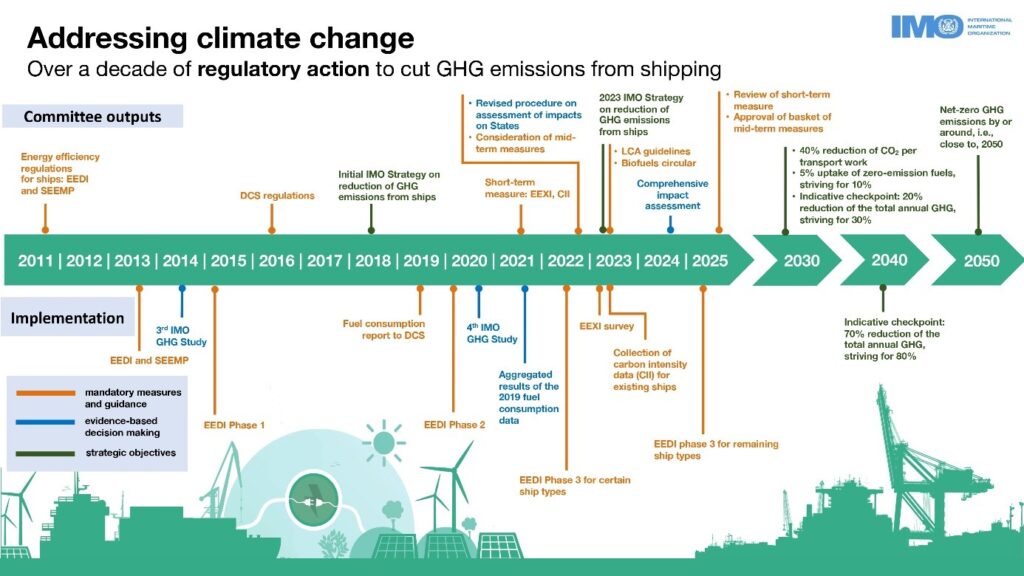
So, what’s the issue?
The maritime industry landscape is shaped by consolidation and tough competition that came down to the “survival of the fittest.” Shipbuilders must deliver smart vessels utilizing the latest technology on time and on budget, not to mention compliance with environmental regulations. But it’s not only the authorities putting the focus on sustainability. Financiers are looking for green assets, consumers demand goods delivered by green transport, and last but not least, ports around the world are starting to penalize non-green ships. So, how do you build a vessel that will last 20-30 years of service in an environment without clarity on what will happen in the next 5 years?
In the sea of uncertainty
The maritime industry is literally at sea looking into the future, obscured by uncertainty. Maybe you shouldn’t expect uncertainty in such a regulated industry, such as the marine industry. However, the uncertainty comes from a lack of clarity. While the industry is driven by the vision of zero-emissions, leaving conventional harmful fuels such as marine diesel oil and heavy fuel oil behind, there is one big and unanswered question: “What is the fuel of the future?” And right now, there are no viable long-term solutions yet.
The 10 maritime fuels fighting for the top spot
At present, discussions surrounding the future of maritime fuel primarily revolve around the top ten alternatives. Unlike the automotive industry, where the debate comes down to two main options, electric vs. hydrogen, in the marine industry, there are no clear indications of which fuel will be ‘the one.’ Unfortunately, each solution has a long list of pros and cons. The data from 2022 shows that the most adopted alternative fuels were LNG, battery/hybrid, LPG, and methanol (source: DNV, Statista ID 1364303) as power sources for ships in operation. And there is no change in the share in the order book in 2022.
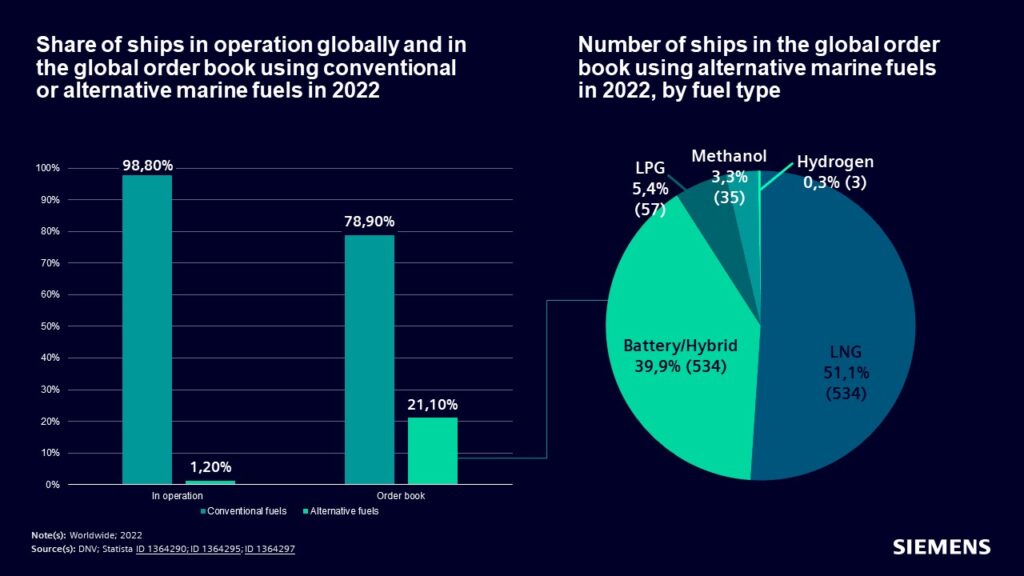
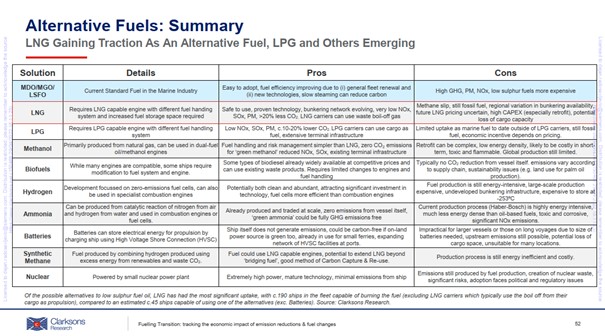
Start with integrated ship design to enable green innovation
In the advanced technological environment, there is no other way than relying on digital ship development tools from the beginning. But the question is, which challenges these tools can cover, and how interconnected they are? The future belongs to the integrated ship design, enabling building vessel digital twin in a streamlined, collaborative environment. In this way, the companies are empowered to predict the performance and make the right decisions as early as possible to optimize designs upfront before the vessel is built. This leaves room to explore the designs and accelerate innovations.
The Simcenter portfolio provides the industry tools that allow a comprehensive analysis of different propulsion options, alternative systems and fuels, and layouts and provides insights into performance and emissions for each respective configuration. Carrying this kind of analysis is critical before signing a contract for a new vessel.
In respect of designing innovative ship solutions, system simulation in conjunction with CFD is becoming an essential tool. As an example, let’s mention Hyundai. Their team is developing models and system tools for marine applications. (Learn more in this blog post.)
In one boat together: classification societies, shipbuilders, and shipowners
The comprehensive design tools enabling well-informed decisions as early as possible are not a privilege of the ship design teams and shipbuilders. Making informed decisions is essential for the class societies and shipowners as well. Class societies are regarded as the leaders, setting the direction for the industry to follow. As early adopters of powering simulation, they have moved towards harnessing the power of integrated systems and CFD simulation. For them, this integrated approach opens doors to providing valuable and informed insights into powering options with different fuel combinations to ship owners at the time of signing a new build contract. Equally, ship owners are starting to recognize the value of having in-house capabilities to analyze, understand, and adjust performance at individual vessel or fleet levels by evaluating different propulsion configurations and identifying the most efficient one.
Seize this moment and register for the Simcenter maritime free trial, granting you access to a guided tour of our diverse software solutions.
